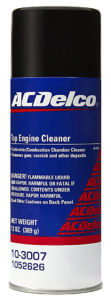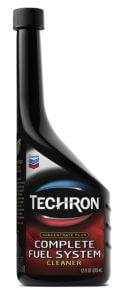Engine Carbon Deposits: How to Safely Clean Your Engine
Learn how to clean engine carbon deposits
Carbon deposits in your engine can reduce performance and efficiency and increase emissions. Over time, carbon can build up in various engine components, including the intake valves, combustion chambers, and fuel injectors. Cleaning these deposits can restore engine performance and longevity. Here’s a detailed guide on how to clean engine carbon deposits effectively.
Why Carbon Deposits Form
Carbon deposits form due to incomplete combustion of fuel. Factors contributing to this include:
• Short trips where the engine doesn’t reach optimal operating temperature.
• Poor fuel quality.
• Low-quality oil or infrequent oil changes.
• Inefficient combustion processes.
Signs of Carbon Build-Up
• Reduced Engine Performance: Loss of power or sluggish acceleration.
• Poor Fuel Economy: Decreased miles per gallon.
• Rough Idle: Engine idling roughly or misfiring.
• Knocking or Pinging: Unusual noises from the engine, especially under load.
Methods to Clean Carbon Deposits
• Using Fuel Additives— Cleaning additives can help remove carbon deposits in the cylinder and the intake valves on carbureted and port fuel-injected engines. But pour-in fuel additives have no effect on intake valves on gasoline direct injection engines because the fuel never touches the intake valves.Manual • Air induction cleaning— This procedure can sometimes help remove carbon buildup on intake valve in gasoline direct injection engines. A strong chemical is atomized into the intake where it contacts the intake valves and dissolves the buildup
• Walnut Shell Blasting— In extreme cases, the intake manifold is removed and the technican blasts the carbon off the intake valves using a walnut shell blasting tool.
Using pour-in additives
Pour-in cleaning additives are easy to use. They cleans the fuel injectors, intake valves (not on GDI engines), and combustion chambers. However, they may not be as effective for severe deposits. For heavy buildup, your engine may require regular use for best results.
Purchase an engine cleaning product that contains P.E.A. or P.I.B.A. and add it to your gas tank, following the dosing instructions on the bottle. See this post for more information on buying a pour-in cleaner. WARNING: More is not better. Do not exceed the concentration level listed on the bottle.
Perform a DIY air induction cleaning
Buy a top engine cleaning product like GM/AC Delco Upper Engine and Fuel Injector Cleaner or CRC Intake Valve Cleaner.

ACDelco 10-3007 Top Engine Cleaner
Do NOT add ANY top engine cleaner to a vacuum hose!! Yes, I know you’ll see all kinds of advice saying to do that. That procedure can DESTROY your catalytic converter or hydrolock your engine. It is an OBSOLETE procedure. See this post to understand WHY you should never add any cleaner to a vacuum line.

Step-by-step Engine Carbon Deposit Cleaning Procedure
1) Buy the GM/AC Delco Upper Engine and Fuel Injector Cleaner in either a bottle or aerosol spray can. If you buy it in a bottle, you’ll have to inject it using a spray bottle. Or, purchase an aerosol can of CRC Intake Valve Cleaner
2) Warm up the engine and let it idle
3) Start spraying the liquid into the MAF sensor (this is really important!). Avoid spraying the cleaner directly onto the MAF sensing elements. Boost the idle to around 1,500 RPM. Continue spraying until the engine stalls. Re-attach the MAF to the air filter box and let the engine sit for at least two hours.
4) Start up the engine. You’ll see lots of smoke. See how it runs. If it’s still rough, do a second treatment.
5) Add the Chevron Techron to the gas tank, following the directions on the bottle.
6) Drive the vehicle.
When to choose walnut shell blasting
If you’ve used air induction cleaning chemicals and still have performance issues related to carbon buildup on the intake valves, you should opt for walnut shell blasting. This is not a DIY project.
The technician must remove the intake manifold to expose the intake valves before they can access the valves and use the blasting tool.
Walnut shell blasting is highly effective at removing carbon deposits. Unfortunately, it requires special equipment, is labor intensive, and is expensive.
©, 2017 Rick Muscoplat
Posted on by Rick Muscoplat
